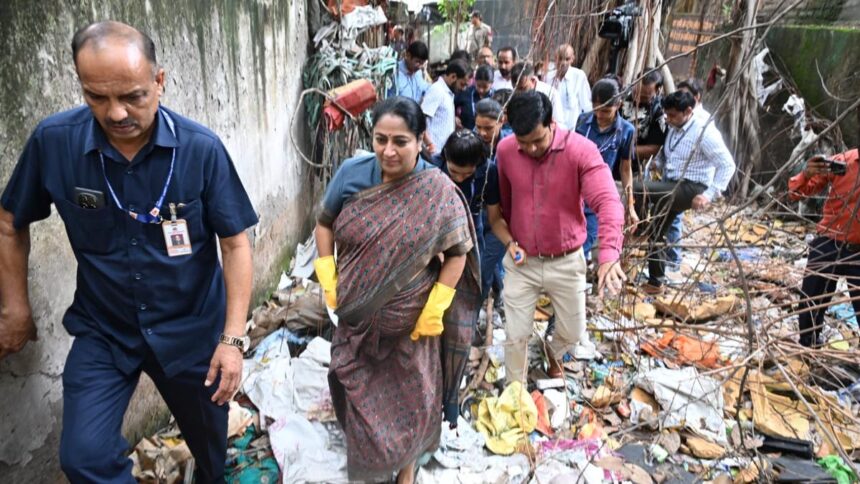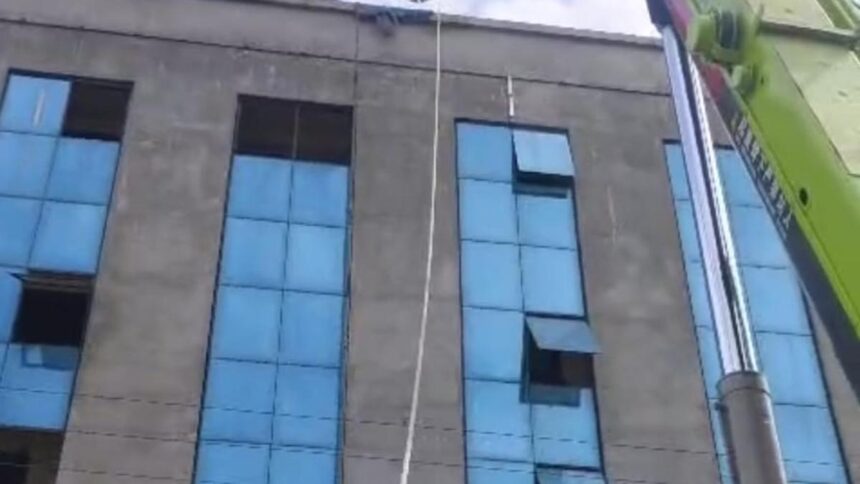
Bengali Basti area of Vasant Kunj in Delhi.
| Photo Credit: Ashna Butani
In the winter of 2024, when Delhi was receiving ‘cold wave’ alerts, my phone would beep multiple times a day to alert me about the detainment of “illegal” Bangladeshi immigrants. The crackdown on the community began in Delhi after Lieutenant Governor Vinai Kumar Saxena’s office issued an order to the police, in the aftermath of the regime change in Bangladesh, to identify foreign nationals “illegally” staying in the capital.
The police first began their searches in the jhuggis of Bengali-speaking migrant workers. When I asked them why certain people fell under their radar of suspicion, they said that their “suspects” spoke Bangla. Some of them also claimed that they had received “tips” from local folks who interpreted on their own the dialects spoken by the “suspects”.
Also Read | India pushing back ‘illegal’ immigrants to Bangladesh
I realised then that due largely to the monolithic representation of Bengalis in the Hindi film industry, and the global reach of Bengalis in Kolkata, people are convinced that the Bengali spoken in Kolkata is the only “authentic” Bengali of Indians. If anyone speaks a different dialect of Bangla, which is the case across rural Bengal and even other urban parts of the State, they are at risk of being identified as Bangladeshi.
It is not just the police which holds such a belief. Some users on X posted that while paani (water) is a word used by Bangladeshis, jol is used by Indian Bengalis. This, they claimed, would help the police identify who is an “illegal” Bangladeshi and who isn’t. What about the fact that Charyapada, an 8th century text, considered to be one of earliest examples of Bengali literature, also uses the word paani for water? No one has an answer.
Also Read | Delhi, followed by Maharashtra, sent back the most number of ‘illegal’ Bangladeshi immigrants
The police, which is actively detaining migrant workers on the basis of the language they speak, have little space in their investigation for nuance. In one case, an officer told me that since he had found a worker sending money from India to Bangladesh, he had detained him. The detainee, however, told me that during the land parcel exchange between Bangladesh and India that was spearheaded by Prime Minister Narendra Modi, he and his siblings chose to become Indian citizens while his parents remained in Bangladesh. He claimed that he was simply sending back money to support his ageing parents.
Other testimonies of detainees also show that legal complications and cross-border relationships do not find place in police interrogations. People have got into trouble simply for wearing a particular garment. A song composed by a few youths from rural Bengal highlights this racial profiling. It goes, “Just because I wear a lungi in a foreign land, I am being called a Bangladeshi. My choice of attire is based on the comfort I feel while working in this heat. That does not mean that I was born in Bangladesh and not in Bharat.”
While documenting the stories of the detainees from West Bengal, and the police procedures, I have had people on social media hurl racial slurs at me and ask me to ‘go back to Bangladesh’. But what has shocked me most is the continuing silence of Bengali public intellectuals. Having heard so often that Bengalis have a substantial influence in the media, in academia, and in the culture and arts space, I expected to see small protests or even a social movement against this ethnicity-based targeting. This has sadly not been the case. Does that mean that the intellectuals hold no power? Or are they just so far removed from all the other Bengalis and wish to be differentiated from the Bengali working class?
The crackdown that first impacted the Bengali Muslims has now started to impact the lower caste Hindu Bengalis as well. Will the intellectuals continue to mark their distance from the working class until those in power get impacted?
alisha.d@thehindu.co.in
Published – August 01, 2025 12:33 am IST




















